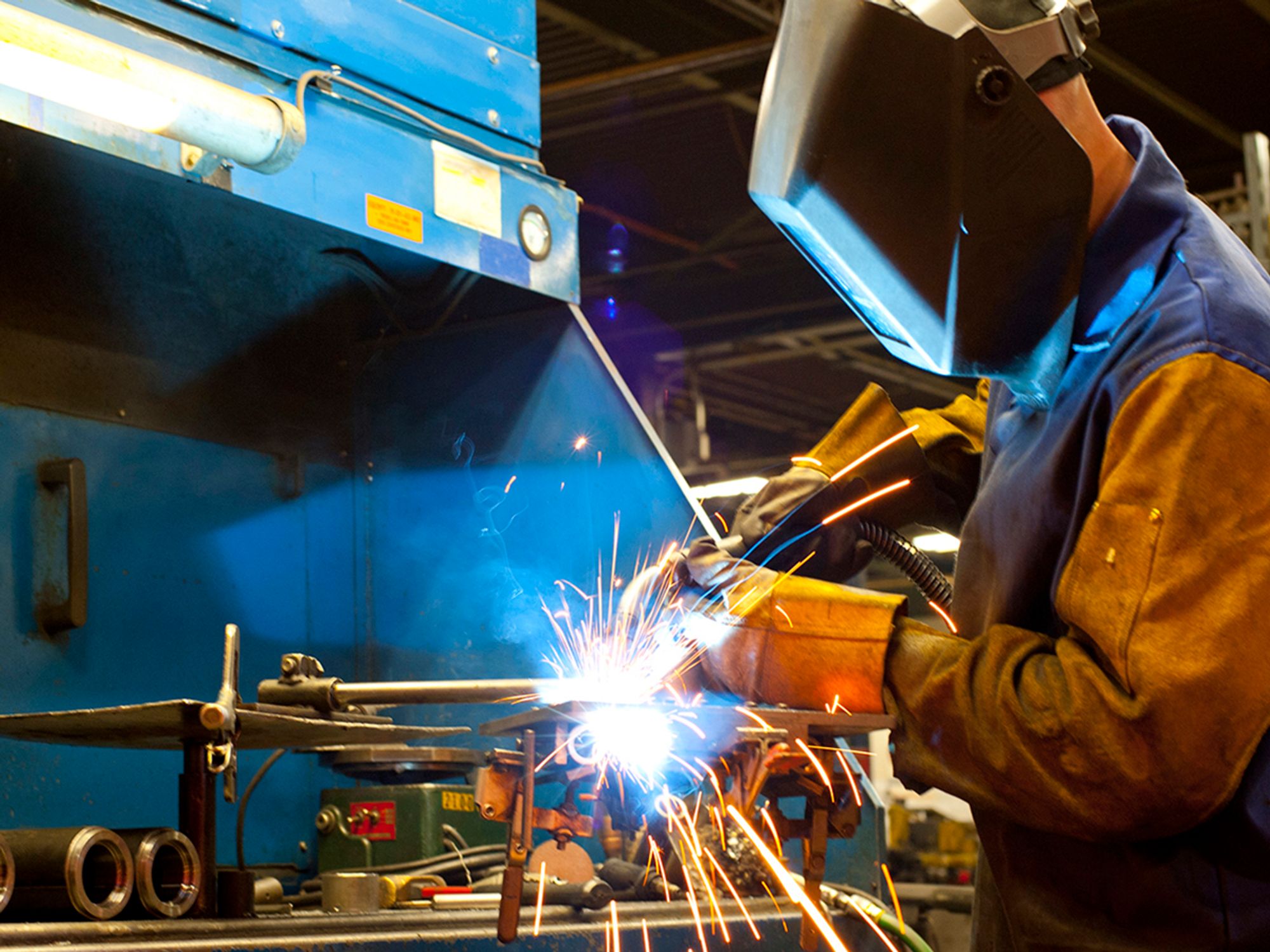Hot work overview

- Welding, cutting, brazing, and similar flame-producing operations are known as “hot work.”
- Hot work requirements include administrative oversight, proper firefighting and other safety equipment, and the use of a fire watch in some cases.
Any time work is performed using equipment that produces a spark or an open flame, or a process that generates excessive heat, there is a risk of fire. Work involving electric or gas welding, cutting, brazing, or similar flame-producing operations is known as “hot work.”
The Occupational Safety & Health Administration (OSHA) doesn’t specifically require companies to have a written permit to perform hot work. However, OSHA prefers that they be used. Many companies choose to have these permits to demonstrate that their hot work program is in compliance. 29 CFR 1910.252 gives general requirements for performing hot work safely.
Some administrative procedures are required before hot work begins:
- If cutting and welding operations will take place in an areas not specifically designed for these processes, employers must designate an individual who is responsible for authorizing them.
- This individual must inspect the area before cutting or welding is permitted.
- Employers must establish precautions to proceed, preferably in the form of a written permit.
- Cutters or welders and their supervisors must be trained in the safe operation of their equipment and the safe use of the process.
In addition to being inspected by the designated individual, the area must be made as hazard-free as possible before hot work begins:
- If there are openings or cracks in the area that can’t be closed, precautions must be taken to keep combustible materials from exposure to sparks that might pass through. Openings may include: cracks or holes in flooring or walls, open doorways, and open or broken windows.
- If the object to be welded or cut can’t readily be moved, all movable fire hazards must be taken away to a safe place.
- If all the fire hazards can’t be removed, the object to be welded or cut must be guarded.
Appropriate safety equipment is required for hot work:
- Suitable fire extinguishing equipment must be kept ready for immediate use.
- Preventative maintenance of specialized tools, warning labels, and ventilation must be conducted on schedule so these things are available and in working order when needed.
- Proper personal protective equipment (PPE) in good condition must be available to and used by welders and cutters.
Some hot work conditions are dangerous enough to require a fire watch:
- Fire watchers must be in place whenever welding or cutting is performed in locations where other than a minor fire might develop.
- The fire watch must be maintained for at least a half hour after welding or cutting finishes to detect and extinguish possible smoldering fires.
Types of welding
Welding is classified into two groups:
- Fusion welding, which uses heat alone and includes: electric arc welding, gas welding, and thermit welding.
- Pressure welding, which uses both heat and pressure and includes: gas pressure welding, friction welding, resistance welding, diffusion welding, ultrasonic welding, and explosion welding.
